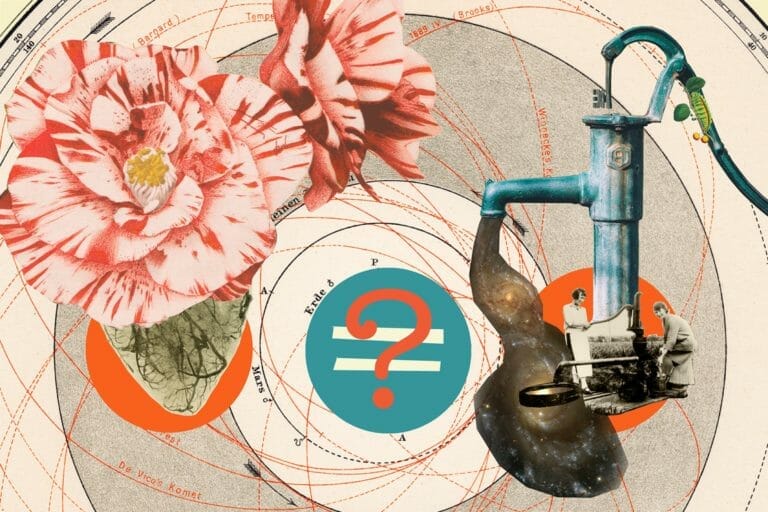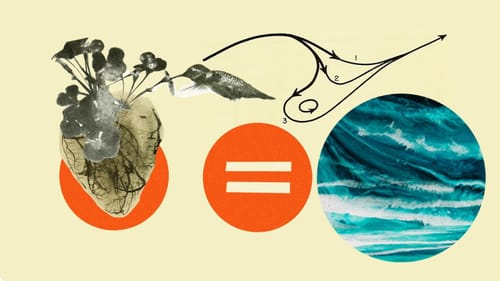Science has revolutionized our lives and continues to show great progress every day. It is always present in our lives helping us daily and, more importantly, it is also extremely useful to improve our quality of life. Science is made from theories and models that bring us closer to the truth about our world. According to this, identifying and understanding the facts related to the origin and the evolution of our universe is one of the greatest achievements of the 20th century. However, as scientific research advances and becomes more and more sophisticated, the universe and everything in it appears to become increasingly complex and non-linear.
The scientific knowledge comes from decades of innovative experiments, theories, and models. Thus, from the perspective of scientists, the truth is based on proof. Everything is made based on observation, experimental testing, and the design of causal mathematical models. For instance, models are supposed to be images of the way things are and work.
The current scientific thinking about the Universe is based on the atomic hypothesis. Several decades ago, Democritus described that the Universe was composed of atoms (from the Greek atomos, which means indivisible) and that objects exhibit oscillatory behaviors. This concept was also reinforced later by the work developed by other modern scientists such as John Dalton, Ludwig Bolzmann, and Albert Einstein. These scientists believed that all things in the Universe are made of atoms, which are little particles that move around, attracting each other when they are not so far apart, but repelling each other upon being squeezed together. More recently, this atomic theory was challenged by visionary scientist, Irving Dardik in this study.

Wave theory suggests an ongoing process of inter-communication between particles.
So, what is everything made of? How do things change and how do they work? What is life? Irving Dardik tackles these questions by describing a new theory, which he entitles “waves that wave”. Dardik proposed that the Universe is composed ultimately only of waves that follow a new principle of waves that wave, and it can explain how we experience matter, space, time, motion, energy, order, and chaos. Instead of particles, this theory states that the “objects” or “things” of nature are waves and shows that every single thing in existence, from genes (that constitute our DNA) to entire galaxies, are complex waves waving in a unique pattern and this being referred to as “superlooping”.
These waves are characterized by frequencies and amplitudes (or intensity) and both are simultaneous and continuous. For instance, in nature, changes in the frequency lead to alterations in the wave, and consequently, any increase or decrease in the frequency creates a new wave pattern or amplitude. Every wave unavoidably incorporates smaller waves and is contained by larger waves. Thus, each high-amplitude low-frequency major wave is modulated by many higher frequency low-amplitude minor waves. Therefore, superlooping can be defined as an ongoing process of waves waving within one another.

The waves of our hearts tell a fascinating and untold story that informs connecting worlds.
Dardik described some examples where patterns of waves waved in nature. He believes that the air molecules, proteins, and even a cell’s normal living cycle are composed of waves. More importantly, he used the heart rate as the main biological model to define his “waves that wave” theory.
Usually, the heart’s activity is measured by an electrocardiogram, which shows repeated blips on a straight line graphic that seems very linear. Dardik studied it in a very different way. According to him, this is known as a “heart wave”, and it can be defined as frequency changes in the heart’s beating rhythm, which occurs as a simple smaller wave contained within the overall wave that is the entire person’s body.
He saw that as a person exercises for a brief moment and then recovers, his or her heart rate goes up and then comes down: a simple wave of exertion and recovery. Superimposed on that large wave are smaller waves of contraction and relaxation of the heart muscle, systole, and diastole, or simply put as the beating of the heart. Further superimposed on the wave of each heartbeat are waves of biochemical oscillations associated with contraction and relaxation. Therefore, there are three waves, nested and waving within one another.
After this assumption, Dardik began to see all human behaviors as waves of energy expenditure and recovery energy, including exercise and recovery, arousal and relaxation, sleep and alertness, eating and fasting, among many others. However, as can be predicted and as also revealed by Dardik, these behavioral waves can be affected by external and internal environmental conditions. These waves, at the genome level, have a great impact on the health and evolution of the organism, while all organisms collectively coordinate the organization and evolution of the ecological environment and climate. Therefore, even small changes in these waves can have significant effects on the organizational coherence of living organisms, which can lead to a disruption in our health and the development, for instance, of chronic diseases. To Dardik, chronic diseases are also represented by waves.

Understanding the mechanics of heart waves
In our daily routine, we can find several examples that might make it easier for us to understand this theory about waves. One good example is related to heart function and physical exercise practice. When an individual practices exercise, his or her heart rate raises, but when the activity stops, it comes back down. The heart muscle itself is regularly in an alternating cycle of exertion (known as systole) and relaxation (known as diastole). Within the heart muscle, and in its different regions, there are waves of biochemical compounds released during this exercise and after the recovery period. This could be understood by us as oscillations in our heart rhythm or our biochemical homeostasis, but according to Dardik these are “waves within waves”.
As described by Dardik, the universe is composed of waves, and the normal behavior of these waves may allow us to live a long and healthy life, by modulating our behavior and quality of life. So, understanding and interpreting these waves may allow us to pinpoint specific health problems, giving us more power over how with live our lives and how we improve our health and wellbeing.
